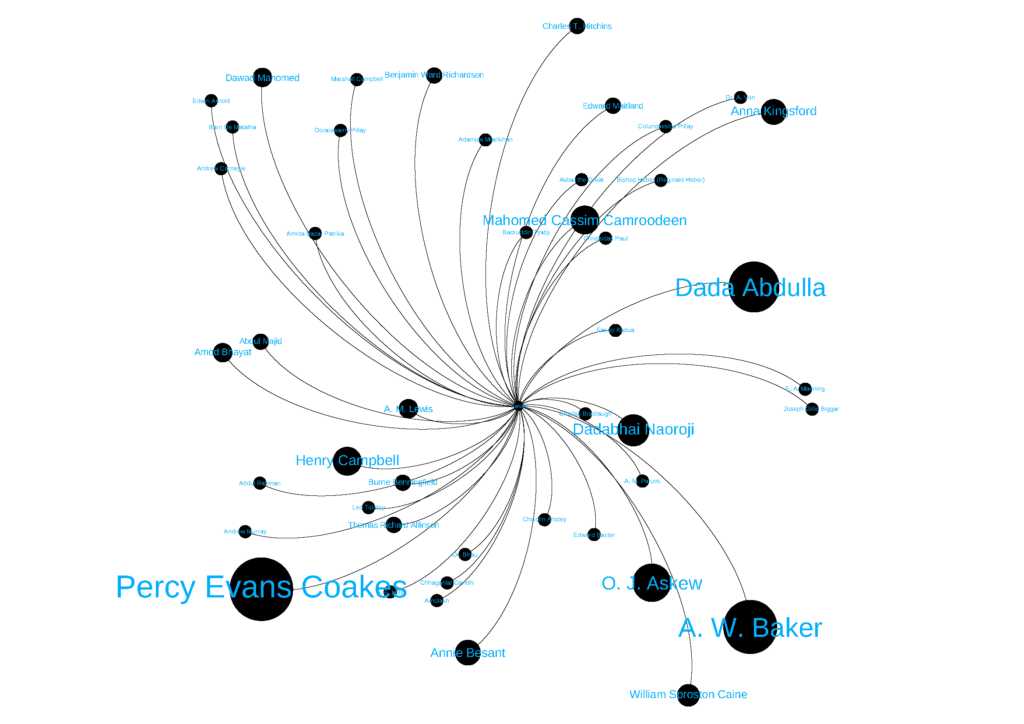As I shared in my last post, I experimented with different ways to quantify Gandhi’s social network. Where I landed was to focus on what I defined as Gandhi’s “instances of writing.” This approach allowed me define Gandhi’s discourse community broadly and include both those individuals he is reading (e.g. book / author references in diaries) as well as those he is in direct contact with through letter exchanges and meetings.
This past summer I did a deep dive with this approach (with the aid of an excellent undergraduate student at my university). In volume one (1888-1896) of Gandhi’s work, the NER process identified roughly 914 names. Of course, as I noted in my previous post, we have to be very judicious with that list. My undergraduate RA made it through about 300 names. Our current (draft) list is 146 individuals. With this list, I developed a set of experimental (and simple) visualizations of Gandhi’s discourse network. NOTE: At this stage, the different visualizations reflect my different approaches to structuring the data in CSV files.
#1: The Individuals in Gandhi’s Discourse Community: This is an ego-centric visualization – one that seeks to understand who Gandhi regularly corresponded and/or citied with (count).

#2: The “Communities” of Gandhi’s Discourse Community: This approach came out through many conversations with my RA and the excellent background research he did on the various actors in Gandhi’s life (1890s). What we were able to do by the end of the summer is begin to identify and visualize the smaller micro-networks (communities) in Gandhi’s life (eco-centric network, 1.5 or in what ways were the individuals in Gandhi’s life connected). As this visualization makes clear, the most prominent communities in Gandhi’s life were: the London Vegetarian Society; the Christian missionary groups in South Africa and London, in particular Esoteric Christian Union; and the Natal Indian Congress. (understanding the network ties in the context of the larger social community of the individual)

#3: The Gender-National Character of Gandhi’s Discourse Community: This approach turns Gandhi’s individual network ties into a set of aggregate datapoints for analysis (or, a reductionist approach). The goal is create a set of visualizations (snapshots) that reveal the socio-ethno-national and gendered nature of Gandhi’s discourse communities at various moments in his career and what those backgrounds may (or may not) suggest about his evolving politics. Here is the visualization of the same set of individuals, but visualized with the following attributes: nationality and sex. NOTE: Future work also hopes to consider race and caste.
